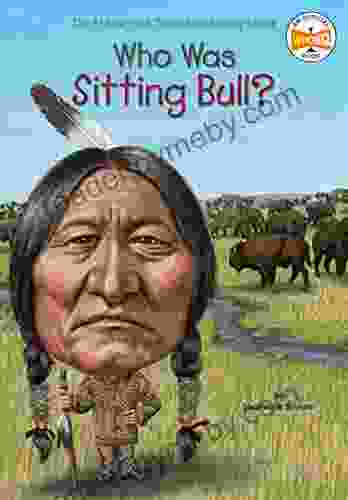Who Was Sitting Bull? The Enigmatic Lakota Chieftain Who Fought for His People's Freedom

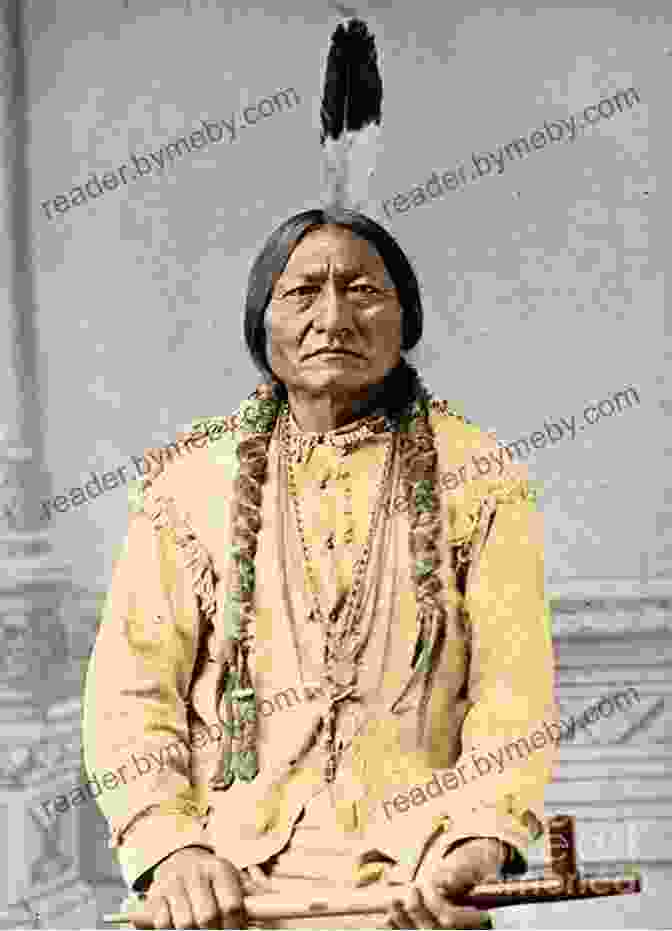
Sitting Bull, the legendary Lakota chief, emerged as a prominent figure in American history during the latter half of the 19th century. His unwavering defiance against the encroachment of white settlers and the United States government made him a symbol of indigenous resistance. Through his charisma, military prowess, and spiritual leadership, he united the Lakota people and led them in the fight for their land and way of life.
4.8 out of 5
| Language | : | English |
| File size | : | 61978 KB |
| Text-to-Speech | : | Enabled |
| Enhanced typesetting | : | Enabled |
| Word Wise | : | Enabled |
| Print length | : | 114 pages |
| Screen Reader | : | Supported |
Early Life and Rise to Prominence
Sitting Bull was born around 1831 near the Grand River in present-day South Dakota. His birth name was Tatanka Iyotake, meaning "Sitting Bull" in the Lakota language. From a young age, he displayed exceptional courage and horsemanship skills. After participating in several successful raids against neighboring tribes, he gained recognition as a formidable warrior.
Around 1857, Sitting Bull joined the Hunkpapa Lakota band, one of the largest and most powerful Lakota groups. He quickly rose through the ranks and became a leading war chief. Known for his strategic brilliance and battlefield tactics, he played a pivotal role in several significant battles against the U.S. Army.
The Sioux Wars and the Battle of Little Bighorn
In the 1860s and 1870s, tensions between white settlers and Native American tribes escalated into a series of conflicts known as the Sioux Wars. Sitting Bull played a pivotal role in these wars, resisting the encroachment of white settlers and the U.S. government's attempts to force Lakota people onto reservations.
In 1876, Sitting Bull joined forces with other Lakota leaders, including Crazy Horse, to confront the U.S. Army led by Lieutenant Colonel George Armstrong Custer. On June 25, 1876, the combined Lakota forces clashed with Custer's Seventh Cavalry in the Battle of Little Bighorn.
The battle proved to be a resounding victory for the Lakota people, as they managed to annihilate Custer's entire battalion. Sitting Bull, who did not participate directly in the battle but provided spiritual guidance to the warriors, played a significant role in the outcome.
Flight to Canada and Surrender
After the Battle of Little Bighorn, the U.S. Army launched a massive offensive against the Lakota people, forcing them into retreat. Sitting Bull, together with thousands of his followers, fled to Canada to seek refuge. He remained in Canada for several years, but eventually, the harsh conditions and lack of food forced him to surrender.
In 1881, Sitting Bull returned to the United States and was taken as a prisoner of war. He was held captive at Fort Randall in South Dakota and later transferred to Standing Rock Reservation.
Later Life and Legacy
During his later years, Sitting Bull became a respected figure even among his former enemies. He shared his wisdom with visitors, advocated for Native American rights, and promoted peace. In 1890, he participated in the Wounded Knee Massacre, where he was shot and killed by Indian police at the age of 59.
Sitting Bull's legacy as a symbol of Lakota resistance and indigenous rights continues to inspire Native American communities and people around the world. He is revered as a great leader, warrior, and spiritual guide who fought tirelessly for the freedom and survival of his people.
Sitting Bull's life and legacy are a testament to the resilience and determination of the indigenous peoples of the Great Plains. Through his unwavering spirit, charismatic leadership, and military prowess, he united the Lakota people and fought for their land, culture, and way of life. Today, his name stands as a symbol of indigenous resistance and a reminder of the struggles and sacrifices made by indigenous peoples throughout history.
4.8 out of 5
| Language | : | English |
| File size | : | 61978 KB |
| Text-to-Speech | : | Enabled |
| Enhanced typesetting | : | Enabled |
| Word Wise | : | Enabled |
| Print length | : | 114 pages |
| Screen Reader | : | Supported |
Do you want to contribute by writing guest posts on this blog?
Please contact us and send us a resume of previous articles that you have written.
 Book
Book Novel
Novel Page
Page Chapter
Chapter Text
Text Story
Story Genre
Genre Reader
Reader Library
Library Paperback
Paperback E-book
E-book Magazine
Magazine Newspaper
Newspaper Paragraph
Paragraph Sentence
Sentence Bookmark
Bookmark Shelf
Shelf Glossary
Glossary Bibliography
Bibliography Foreword
Foreword Preface
Preface Synopsis
Synopsis Annotation
Annotation Footnote
Footnote Manuscript
Manuscript Scroll
Scroll Codex
Codex Tome
Tome Bestseller
Bestseller Classics
Classics Library card
Library card Narrative
Narrative Biography
Biography Autobiography
Autobiography Memoir
Memoir Reference
Reference Encyclopedia
Encyclopedia Steven Satterfield
Steven Satterfield Marsha Diane Arnold
Marsha Diane Arnold Stephen Chan
Stephen Chan Robert Kiltz
Robert Kiltz T J English
T J English Seth Stein
Seth Stein Marjorie Druker
Marjorie Druker Mari Schuh
Mari Schuh Kathleen Karr
Kathleen Karr Susan L Roth
Susan L Roth Nikkole Salter
Nikkole Salter Simon C Parker
Simon C Parker Michael Greger
Michael Greger Ruth Sawyer
Ruth Sawyer Sarah Shephard
Sarah Shephard Meghan O Flynn
Meghan O Flynn Roy Macskimming
Roy Macskimming Sohail Daulatzai
Sohail Daulatzai Temple Grandin
Temple Grandin Mary Fisk Pack
Mary Fisk Pack
Light bulbAdvertise smarter! Our strategic ad space ensures maximum exposure. Reserve your spot today!

 William ShakespeareMaster the Highway Code: Conquer Your DVSA Theory Test with our 2024 Practice...
William ShakespeareMaster the Highway Code: Conquer Your DVSA Theory Test with our 2024 Practice...
 Jimmy ButlerUnlock the Enigmatic Secrets of Easter Island in "Easter Island: The Secret...
Jimmy ButlerUnlock the Enigmatic Secrets of Easter Island in "Easter Island: The Secret... Blake KennedyFollow ·10.3k
Blake KennedyFollow ·10.3k Matthew WardFollow ·8.6k
Matthew WardFollow ·8.6k Nathaniel HawthorneFollow ·4.3k
Nathaniel HawthorneFollow ·4.3k Doug PriceFollow ·4.9k
Doug PriceFollow ·4.9k Gabriel MistralFollow ·3.9k
Gabriel MistralFollow ·3.9k George R.R. MartinFollow ·7.9k
George R.R. MartinFollow ·7.9k Aubrey BlairFollow ·18.2k
Aubrey BlairFollow ·18.2k Kurt VonnegutFollow ·17.4k
Kurt VonnegutFollow ·17.4k

 Wayne Carter
Wayne CarterThe Beginner's Guide to Making an Old Motor Run Forever
If you're like most...
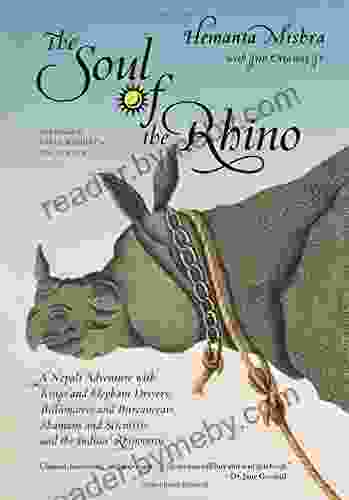
 Deacon Bell
Deacon BellNepali Adventure: Kings and Elephant Drivers,...
In the heart of the...
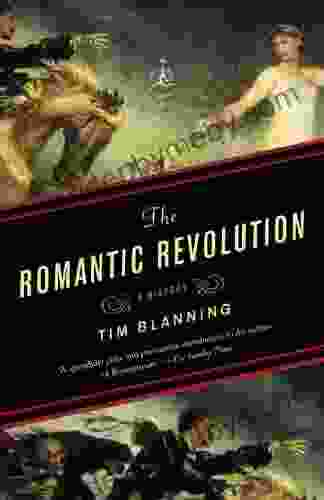
 Carlos Drummond
Carlos DrummondThe Romantic Revolution: A Journey Through History and...
Unveiling the...

 Kazuo Ishiguro
Kazuo IshiguroUnlock Your Inner Innovator: Dive into the New Wave...
Embark on a Transformative Journey of...
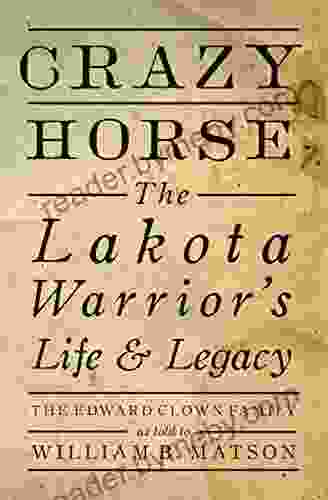
 William Golding
William GoldingCrazy Horse: The Lakota Warrior's Life and Legacy
In the annals of Native...

 Hector Blair
Hector BlairMildred and Richard Loving: The Inspiring Story of...
Mildred and Richard Loving were an...
4.8 out of 5
| Language | : | English |
| File size | : | 61978 KB |
| Text-to-Speech | : | Enabled |
| Enhanced typesetting | : | Enabled |
| Word Wise | : | Enabled |
| Print length | : | 114 pages |
| Screen Reader | : | Supported |


